 W
WThe Black Stone is a rock set into the eastern corner of the Kaaba, the ancient building in the center of the Grand Mosque in Mecca, Saudi Arabia. It is revered by Muslims as an Islamic relic which, according to Muslim tradition, dates back to the time of Adam and Eve.
 W
WThe Blarney Stone is a block of Carboniferous limestone built into the battlements of Blarney Castle, Blarney, about 8 kilometres from Cork, Ireland. According to legend, kissing the stone endows the kisser with the gift of the gab. The stone was set into a tower of the castle in 1446. The castle is a popular tourist site in Ireland, attracting visitors from all over the world to kiss the stone and tour the castle and its gardens.
 W
WThe Blowing Stone is a perforated sarsen at grid reference SU32412 87083 in Kingston Lisle, Oxfordshire. The stone is in a garden at the foot of Blowingstone Hill just south of the Icknield Way (B4507), about 4 1⁄2 miles (7 km) west of Wantage and about 1 1⁄2 miles (2.4 km) east of White Horse Hill.
 W
WThe Boston Stone is a stone in Boston, Massachusetts. Near —but not on— the Freedom Trail, it is a minor tourist attraction.
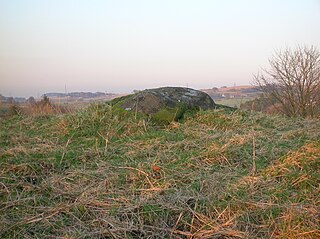 W
WCarlin Stone or Carlin Stane is the name given to a number of prehistoric standing stones and natural stone or landscape features in Scotland. The significance of the name is unclear, other than its association with old hags, witches, and the legends of the Cailleach.
 W
WCharter Stones date back to ancient times when such stones were granted to individuals or communities in lieu of written charters to signify the granting of land by the crown, feudal overlords or other individuals. They were used to record ownership of land before written documents came into general use.
 W
WChrysanthemum stone, sometimes called "flower stone," is a stone "flower" produced millions of years ago due to geological movement and natural formation in the rock. The stone's pattern resembles the chrysanthemum flower. The flower is milky white and grain is clear.
 W
WA concretion is a hard, compact mass of matter formed by the precipitation of mineral cement within the spaces between particles, and is found in sedimentary rock or soil. Concretions are often ovoid or spherical in shape, although irregular shapes also occur. The word 'concretion' is derived from the Latin con meaning 'together' and crescere meaning 'to grow'. Concretions form within layers of sedimentary strata that have already been deposited. They usually form early in the burial history of the sediment, before the rest of the sediment is hardened into rock. This concretionary cement often makes the concretion harder and more resistant to weathering than the host stratum.
 W
WThe Culbone Stone, an early mediaeval standing stone, is close to Culbone in the English county of Somerset. The stone is made from Hangman grit, a local sandstone, and has a wheeled ring cross carved into it. The stone has been scheduled as an ancient monument.
 W
WThe Dinnie Stones are a pair of Scottish lifting stones located in Potarch, Aberdeenshire. They were made famous by strongman Donald Dinnie, who reportedly carried the stones barehanded across the width of the Potarch Bridge, a distance of 17 ft 1.5 in (5.22 m), in 1860. They remain in use as lifting stones.
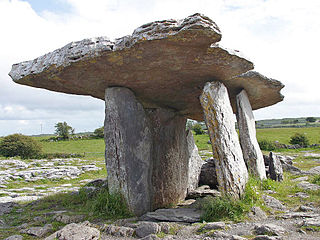 W
WA dolmen is a type of single-chamber megalithic tomb, usually consisting of two or more vertical megaliths supporting a large flat horizontal capstone or "table". Most date from the early Neolithic and were sometimes covered with earth or smaller stones to form a tumulus. Small pad-stones may be wedged between the cap and supporting stones to achieve a level appearance. In many instances, the covering has weathered away, leaving only the stone "skeleton" of the mound intact.
 W
WEilat Stone derives its name from the city of Eilat where it was once mined. It is a green-blue heterogeneous mixture of several secondary copper minerals including malachite, azurite, turquoise, pseudomalachite, chrysocolla. The Eilat stone is the National stone of Israel, and is also known as the King Solomon Stone.
 W
WA grave orb is a petrosphere that was put on a person's tomb. Grave orbs were made throughout Scandinavia from the Pre-Roman Iron Age until the Vendel era.
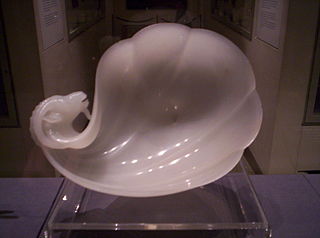 W
WHardstone is an unscientific term, mostly encountered in the decorative arts or archaeology, that has a similar meaning to semi-precious stones, or gemstones. Very hard building stones, such as granite, are not included in the term in this sense, but only stones which are fairly hard and regarded as attractive – ones which could be used in jewellery. Hardstone carving is the three-dimensional carving for artistic purposes of semi-precious stones such as jade, agate, onyx, rock crystal, sard or carnelian, and a general term for an object made in this way. Two-dimensional inlay techniques for floors, furniture and walls include pietre dure, opus sectile, and medieval Cosmatesque work – these typically inlay hardstone pieces into a background of marble or some other building stone.
 W
WA headstone, tombstone, or gravestone is a stele or marker, usually stone, that is placed over a grave. It is traditional for burials in the Christian, Jewish, and Muslim religions, among others. In most cases, it has the deceased's name, date of birth, and date of death inscribed on it, along with a personal message, or prayer, but may contain pieces of funerary art, especially details in stone relief. In many parts of Europe, insetting a photograph of the deceased in a frame is very common.
 W
WThe Hitching Stone is a gritstone erratic block on Keighley Moor, North Yorkshire, near Earl Crag and the village of Cowling. It is very close to the border between North Yorkshire and West Yorkshire and the border between Yorkshire and Lancashire..
 W
WA hunger stone is a type of hydrological landmark common in Central Europe. Hunger stones serve as famine memorials and warnings and were erected in Germany and in ethnic German settlements throughout Europe in the 15th through 19th centuries.
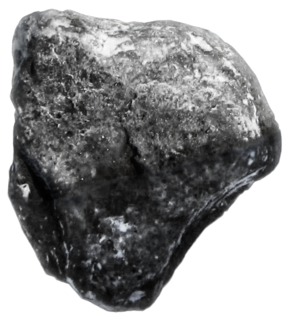 W
WThe Húsafell Stone is a lifting stone located in Húsafell, Iceland. The stone weighs 186 kg (409 lb) and was kept near a sheep pen built by reverend Snorri Björnsson over two hundred years ago.
 W
WA khachkar, also known as an Armenian cross-stone is a carved, memorial stele bearing a cross, and often with additional motifs such as rosettes, interlaces, and botanical motifs. Khachkars are characteristic of Medieval Christian Armenian art.
 W
WKurgan stelae or Balbals are anthropomorphic stone stelae, images cut from stone, installed atop, within or around kurgans, in kurgan cemeteries, or in a double line extending from a kurgan. The stelae are also described as "obelisks" or "statue menhirs".
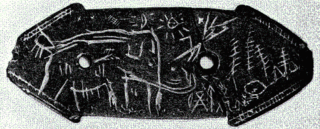 W
WThe Lenape Stone is a piece of slate found in Bucks County, Pennsylvania in 1872, which appears to depict Native Americans hunting a woolly mammoth. This image, however, seems to have been carved some time after the stone was broken into two; for this and other reasons, it is generally considered an archaeological forgery.
 W
WLifting stones are heavy natural stones which people are challenged to lift, proving their strength. They are common throughout northern Europe, particularly Scotland, Wales, Iceland, Scandinavia and North West England centred around Cumbria.
 W
WLondon Stone is a historic landmark housed at 111 Cannon Street in the City of London. It is an irregular block of oolitic limestone measuring 53 × 43 × 30 cm, the remnant of a once much larger object that had stood for many centuries on the south side of the street.
 W
WLondon Stone is the name given to a number of boundary stones that stand beside the rivers Thames and Medway, which formerly marked the limits of jurisdiction of the City of London.
 W
WMaen Huail is a stone block at St Peter's Square, in the centre of Ruthin, Denbighshire, North Wales. A circular plaque next to it states "Maen Huail on which tradition states, King Arthur beheaded Huail, brother of Gildas the historian". The stone was recorded in 1699 as being in the middle of the road, and now stands on a concrete plinth against the half-timbered wall of the Barclays Bank building, a 20th-century copy of the now mainly destroyed Exmewe Hall.
 W
WThe octopus stone, Taiko-ishi 蛸石 is a large stone at Osaka Castle in Japan. The stone is near Sakura Gate.
 W
WRoughly 400 known ogham inscriptions are on stone monuments scattered around the Irish Sea, the bulk of them dating to the fifth and sixth centuries. Their language is predominantly Primitive Irish, but a few examples record fragments of the Pictish language. Ogham itself is an Early Medieval form of alphabet or cipher, sometimes known as the "Celtic Tree Alphabet".
 W
WThe Pedras de abalar, Galician for "oscillating stones", are several large stones in Galicia, Spain, that can easily be moved by a person or the wind. One of these is in Muxía, and is known as the "Pedra da Barca". These are large stones that are balanced on a point, so that they can be moved back and forth easily, or even wiggle in response to the wind. These were used at one time to determine the guilt or innocence of those accused of serious crimes. In English, such stones have been called rocking stones, or logan stones.
 W
WPortakar or navel stones are traditional ritual stones in Armenia. They are bound up with cult of the fertility goddess, called in ancient Armenia, like the cult of the goddess Anahit.
 W
WThe Rock is a boulder on the campus of Northwestern University in Evanston, Illinois, United States, located in between University Hall and Harris Hall. It serves as a billboard for campus groups and events, and has been painted with different colors and messages over the years.
 W
WRocking stones are large stones that are so finely balanced that the application of just a small force causes them to rock. Typically, rocking stones are residual corestones formed initially by spheroidal weathering and have later been exposed by erosion or glacial erratics left by retreating glaciers. Natural rocking stones are found throughout the world. A few rocking stones might be man-made megaliths.
 W
WThe Rosetta Stone is a granodiorite stele inscribed with three versions of a decree issued in Memphis, Egypt in 196 BC during the Ptolemaic dynasty on behalf of King Ptolemy V Epiphanes. The top and middle texts are in Ancient Egyptian using hieroglyphic and Demotic scripts respectively, while the bottom is in Ancient Greek. The decree has only minor differences between the three versions, making the Rosetta Stone key to deciphering Egyptian hieroglyphs.
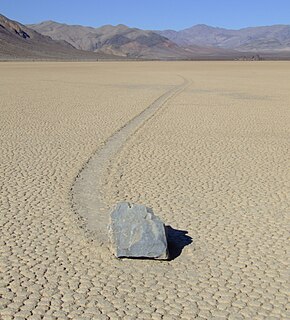 W
WSailing stones are part of the geological phenomenon in which rocks move and inscribe long tracks along a smooth valley floor without animal intervention. The movement of the rocks occurs when large sheets of ice a few millimeters thick and floating in an ephemeral winter pond break up on sunny days. Frozen during cold winter nights, these thin, floating ice panels are driven by wind and shove rocks at speeds up to 5 meters per minute.
 W
WThe Sessho-seki , or "Killing Stone", is an object in Japanese mythology. It is said that the stone kills anyone who comes into contact with it.
 W
WThe Shabaka Stone, sometimes Shabaqo, is a relic incised with an ancient Egyptian religious text, which dates from the Twenty-fifth Dynasty of Egypt. In later years, the stone was likely used as a millstone, which damaged the hieroglyphs. This damage is accompanied by other intentional defacements, leaving the hieroglyphic inscription in poor condition.
 W
WSharpening stones, water stones or whetstones are used to sharpen the edges of steel tools and implements through grinding and honing.
 W
WThe Silchester Ogham stone is a pillar stone discovered at the Roman town on Calleva Atrebatum in Silchester, Hampshire during excavations in 1893. Thus far it remains the only one of its kind found in England, and the only ogham inscription in England east of Cornwall and Devon. The stone is held in a storage facility of Reading Museum in Reading, Berkshire.
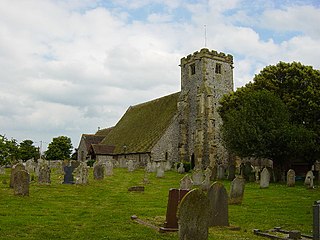 W
WThe Slayer's Slab is a title given to a medieval gravestone formerly in the graveyard of Lyminster church in West Sussex, England. It has now been moved inside the church to protect it from weathering. According to legend it is the gravestone of the dragonslayer who killed the Knucker who lived in the nearby knuckerhole. The stone has a cross on it overlaying a herringbone pattern, but no inscription to identify the tomb's occupant.
 W
WA statue menhir is a type of carved standing stone created during the later European Neolithic.
 W
WA stele, or occasionally stela, when derived from Latin, is a stone or wooden slab, generally taller than it is wide, erected in the ancient world as a monument. The surface of the stele often has text, ornamentation, or both. These may be inscribed, carved in relief, or painted.
 W
WStone damage, or stone-chip, is the damage that gravel and small stones can make to a vehicle.
 W
WThe Stone of Tizoc, Tizoc Stone or Sacrificial Stone is a large, round, carved Aztec stone. Because of a shallow, round depression carved in the center of the top surface, it may have been a cuauhxicalli or possibly a temalacatl. Richard Townsend maintains, however, that the depression was made in the 16th century for unknown purposes.
 W
WStone skipping and stone skimming are considered related but distinct activities: both refer to the art of throwing a flat stone across the water in such a way that it bounces off the surface. The objective of "skipping" is to see how many times a stone can bounce before it sinks into the water; the objective of "skimming" is to see how far a bouncing stone can travel across the water before it sinks into the water. In Japan, the practice is referred to as "Mizu Kiri," which loosely translates to "water cutting." In Mizu Kiri contests, both skimming and skipping principles, as well as a throw's overall aesthetic quality, are taken into account to determine the winners.
 W
WThe Swastika Stone is a stone adorned with a design that resembles a swastika, located on the Woodhouse Crag on the northern edge of Ilkley Moor in West Yorkshire. The design has a double outline with five curved arms enclosing several so-called 'cup' marks, the like of which can be found on other stones nearby.
 W
WThe Thurgartstone or Ogrestone is a prominent glacial erratic stone near Dunlop in East Ayrshire, Scotland. The Thurgartstone stands in a field at Brandleside Farm and is thought to have been a rocking stone at one time, but it no longer moves due to a build up of soil beneath.
 W
WThe twelve-angled stone is an archeological artefact in Cuzco, Peru. It was part of a stone wall of an Inca palace, and is considered to be a national heritage object. The stone is currently part of a wall of the palace of the Archbishop of Cuzco.
 W
WA vishapakar also known as vishap stones, vishap stellas, "serpent-stones", "dragon stones", or simply as vishaps, are characteristic menhirs found in large quantities in the Armenian Highlands, in natural and artificial ponds, and other sources of water. They are commonly carved from one piece of stone, into cigar-like shapes with fish heads or serpents. Supposedly they are images of vishaps, mystical creatures.
 W
WThe Western Stone is a monolithic stone ashlar block forming part of the lower level of the Western Wall in Jerusalem. This largest stone in the Western Wall is visible within the Western Wall Tunnel. It is one of the largest building blocks in the world.
 W
WThe Yuhua stone is a special kind of stone found in Nanjing, China, due to the unique geology of the area. Yuhua stones, or pebbles, are of sedimentary origin and consist of minerals including quartz and other silicates. They are found in the Yangtze River, polished smooth by the action of water. Colors include red, rose, yellow, green, and white.
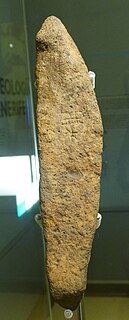 W
WThe Zanata Stone, also known as the Zenata Stone, is a small stele with engravings. The tablet is presumably of Guanche origin. It was found in 1992 near a mountain known as Montaña de las Flores in the municipality of El Tanque, located in the northwestern part of Tenerife, Canary Islands.